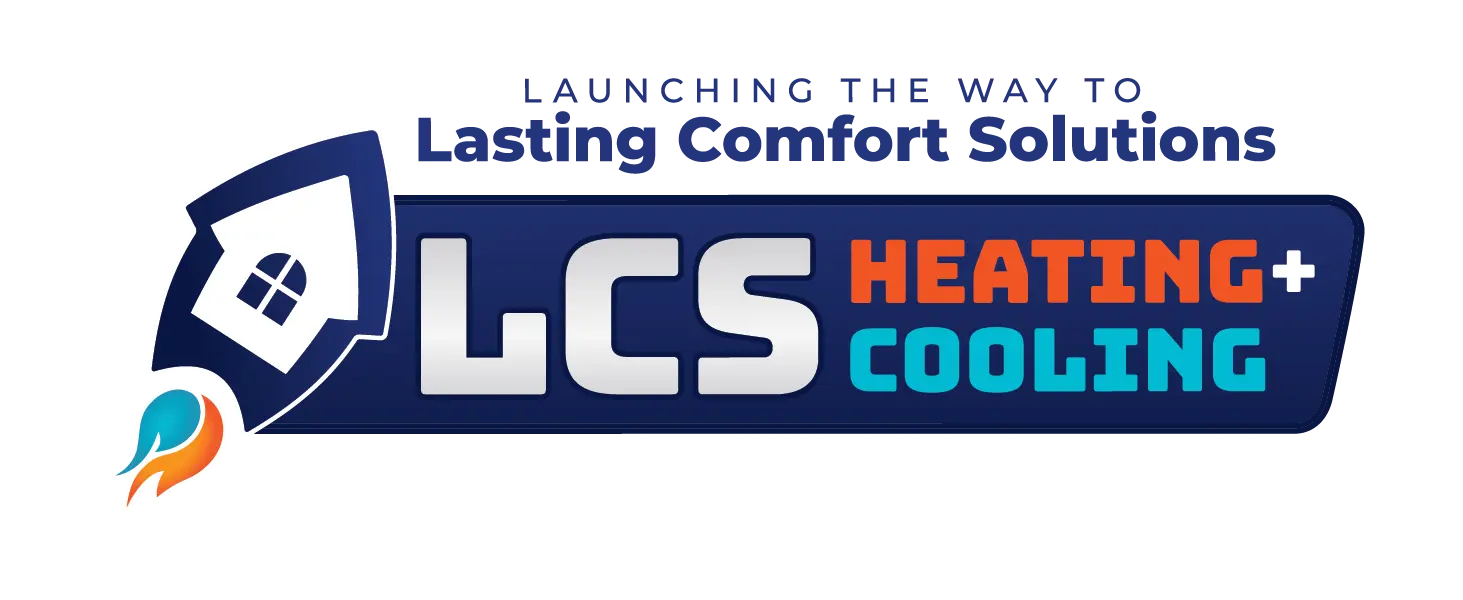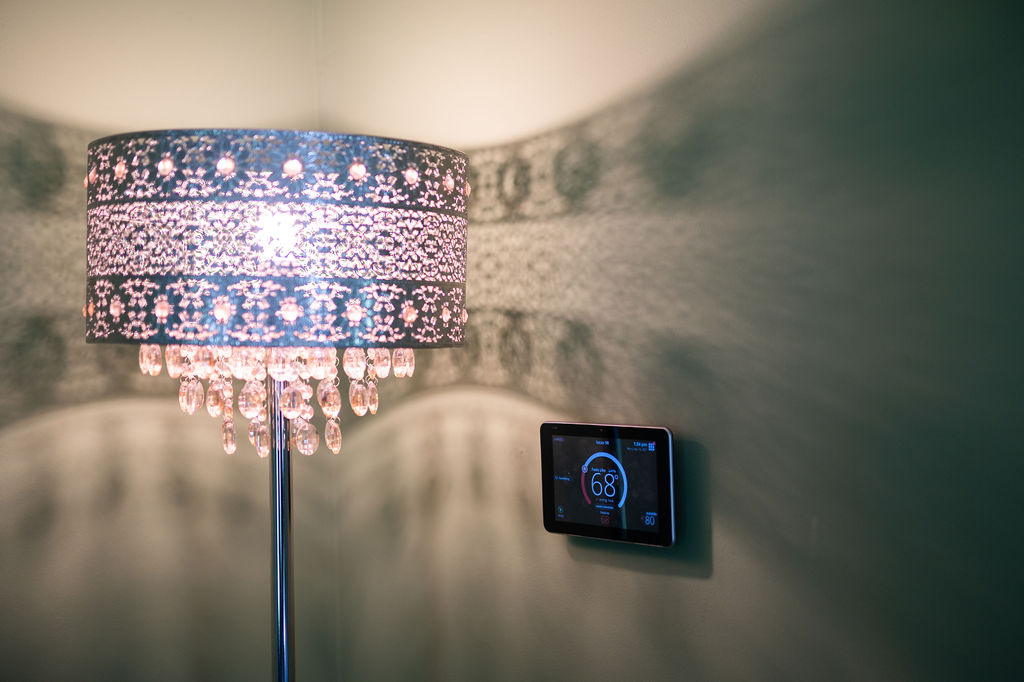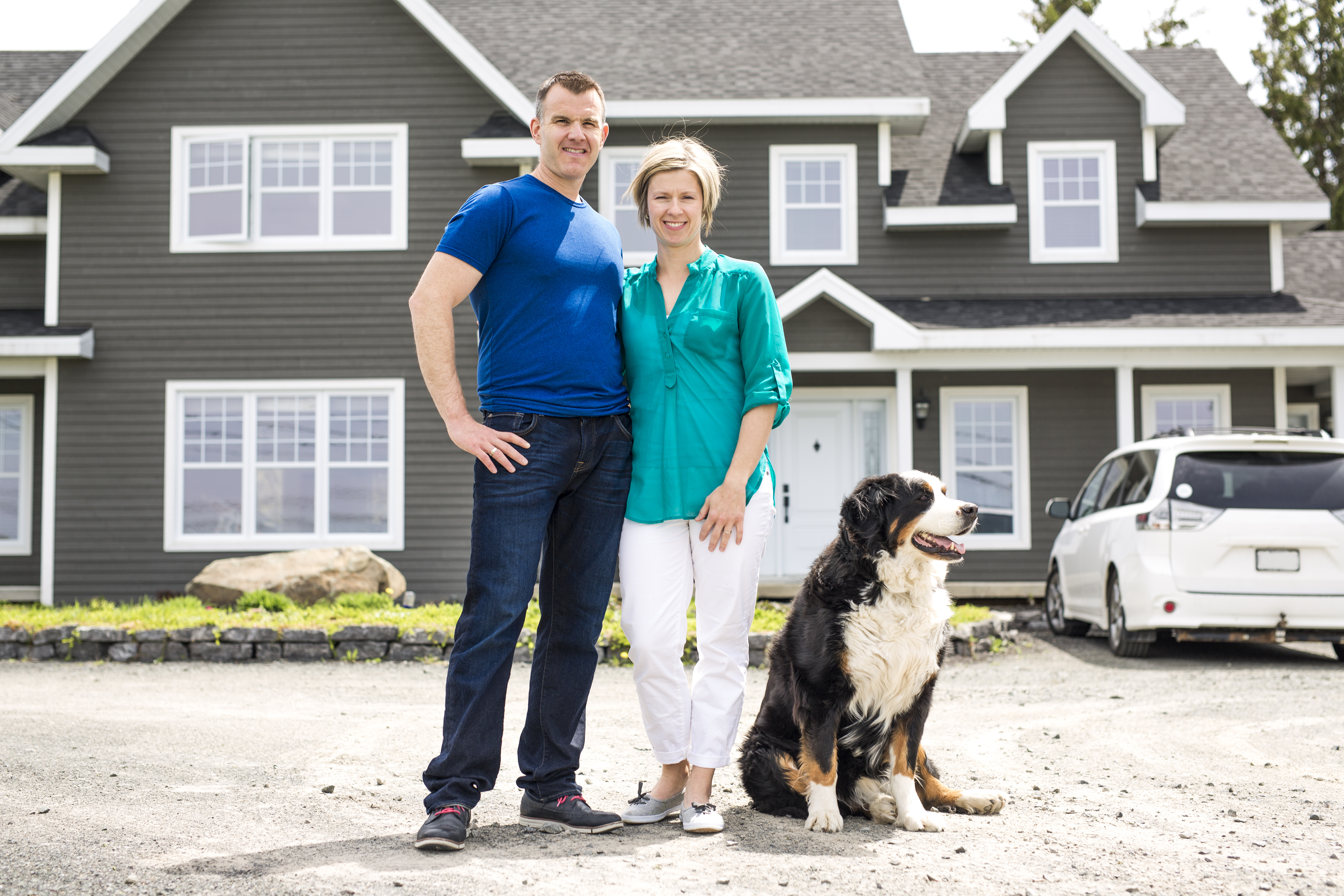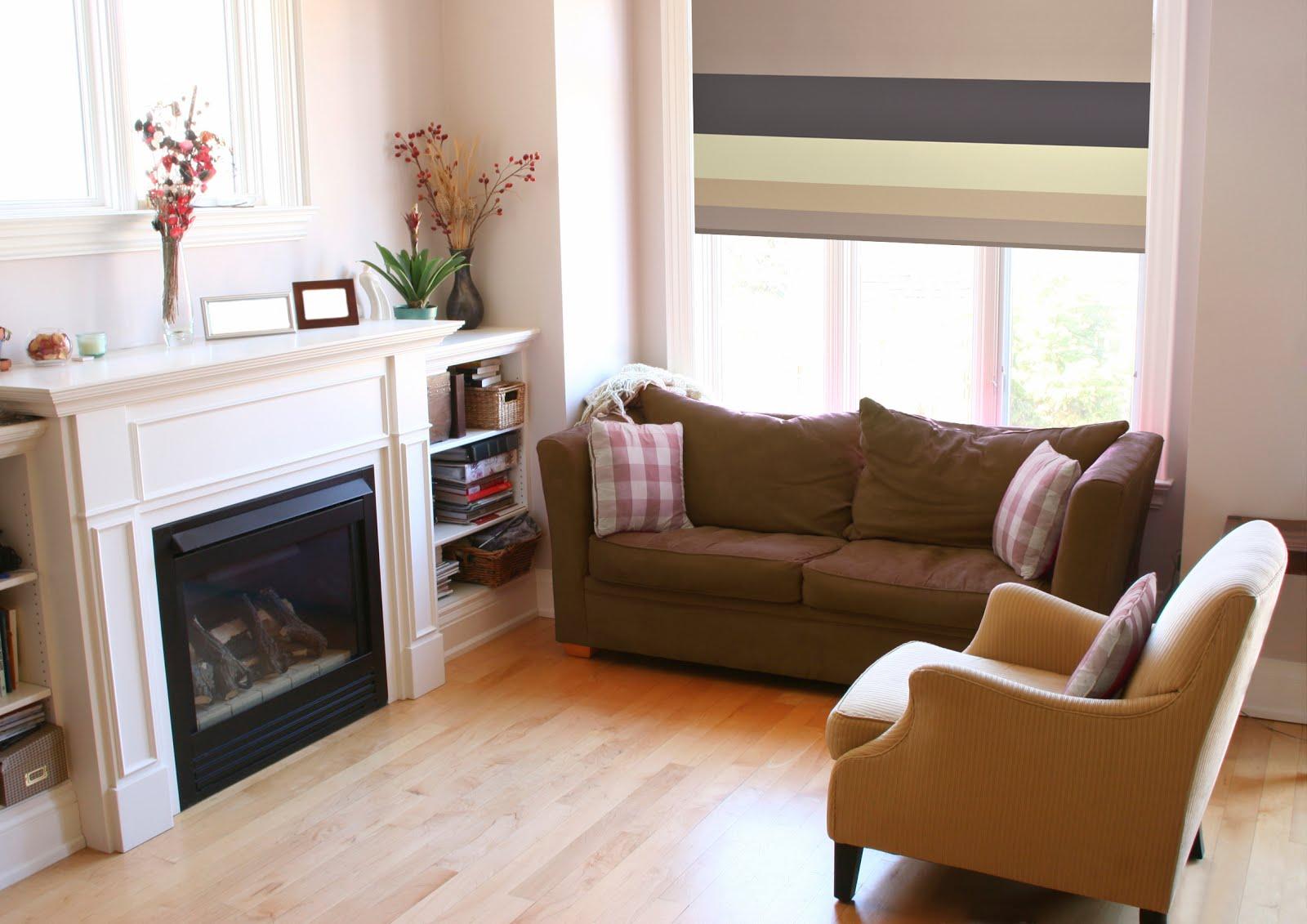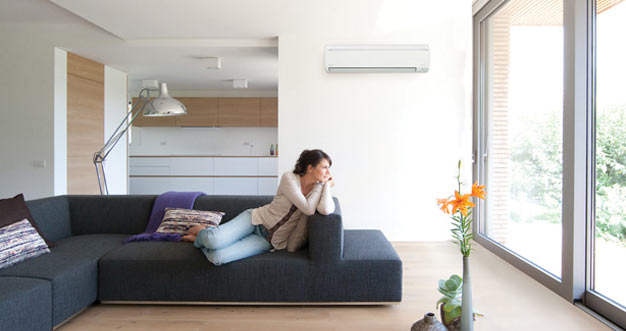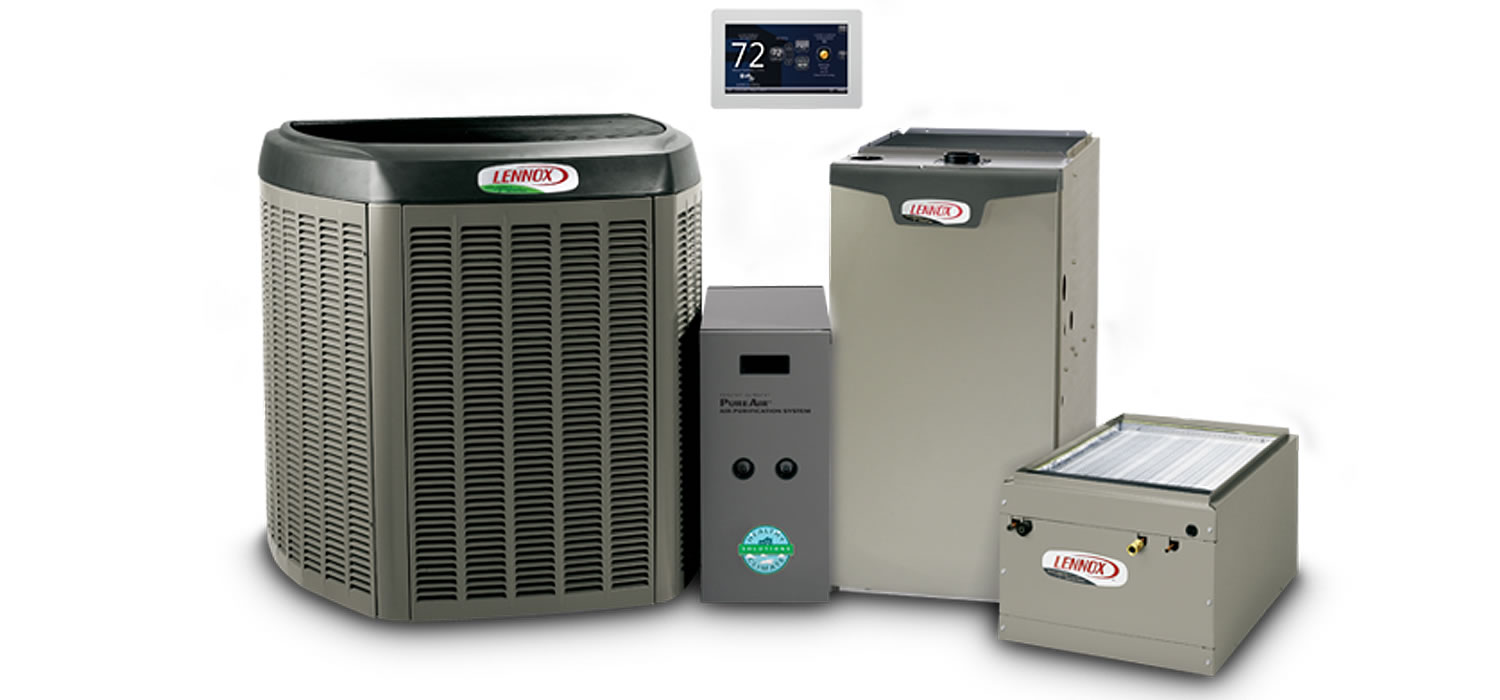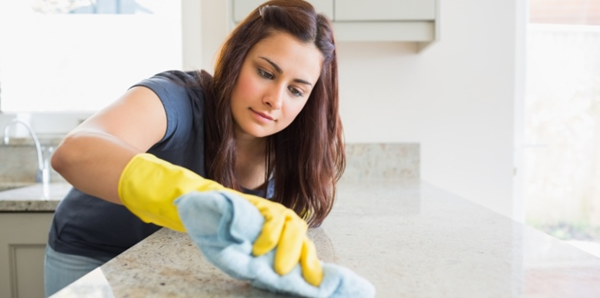Decoding HVAC Jargon: Emergency Heat, Auxiliary Heat, and Backup Electric Explained!
When temperatures drop, we understand the importance of a reliable heating system to keep you warm and cozy. But have you ever scratched your head trying to figure out the difference between emergency heat, auxiliary heat, and backup electric in your HVAC system? Don't worry, you're not alone! We’re going to break it down in simple terms to help you make smart choices this winter.
Auxiliary Heat: The Trusty Sidekick
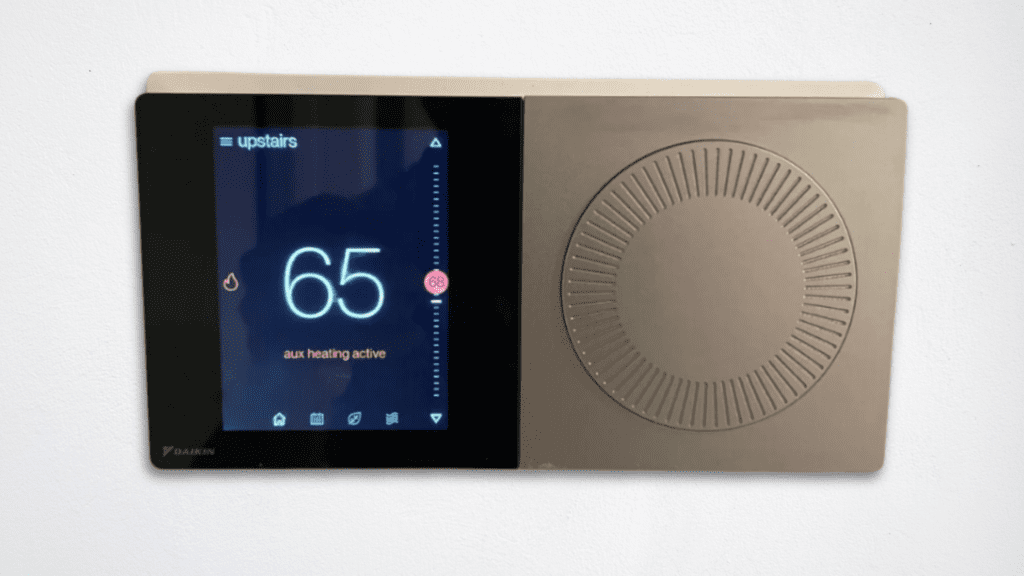 First, let's talk about auxiliary heat – the trusty sidekick to your electric systems that are heat pump and electric furnace. In most cases, auxiliary heat works alongside your heat pump to provide that extra boost when needed. Think of it as your HVAC system's way of saying, "I've got your back!"
First, let's talk about auxiliary heat – the trusty sidekick to your electric systems that are heat pump and electric furnace. In most cases, auxiliary heat works alongside your heat pump to provide that extra boost when needed. Think of it as your HVAC system's way of saying, "I've got your back!"
Standard heat pumps are efficient down to about 35 degrees outside. When it gets colder than that, they have a hard time keeping up on their own, so the electric furnace kicks in to assist. This furnace uses electric resistance coils to help maintain your desired indoor temperature. The colder it gets outside, the more the electric furnace runs to assist. While the electric furnace is running, some thermostats will show AUX.
Auxiliary heat is not efficient, however, so expect utility bills to be higher when it's really cold outside. However, this is some potential relief in sight: more efficient heat pumps called cold climate heat pumps have been developed more recently. They are efficient down to about 5 degrees outside, utilizing less backup electric from your electric furnace. This is great news for your utility bills!
Emergency Heat: Your HVAC Superhero
Imagine this scenario: it's the coldest night of the year, and your heating system is working overtime to keep up. Suddenly, something goes wrong—your heat pump struggles. Emergency heat to the rescue!
Emergency heat is a superhero because if a heat pump breaks down, you can use it to generate heat in your home. Keep in mind that switching the thermostat to emergency heat should only be done if you know the heat pump is not working properly. Like auxiliary heat, emergency heat can be expensive to run if your home is fully electric, so you'll want your heat pump checked out immediately.
Overall, in Indianapolis where winters can yo-yo from mild to downright harsh, having a reliable emergency heat source, like a gas furnace, ensures your home stays warm and toasty even on the coldest nights.
Backup Electric: Another Name for the Same Option
Last but not least, let's talk about backup electric. This feature is like the contingency plan in case your primary heating source experiences a hiccup. For example, if your heat pump malfunctions, backup electric heat strips can step in to keep things warm while you schedule a repair.
While backup electric heat is a reliable Plan B, it's essential to use it sparingly. Electric heating can be more expensive than other options, so consider it your safety net rather than your go-to heating source.
The Difference
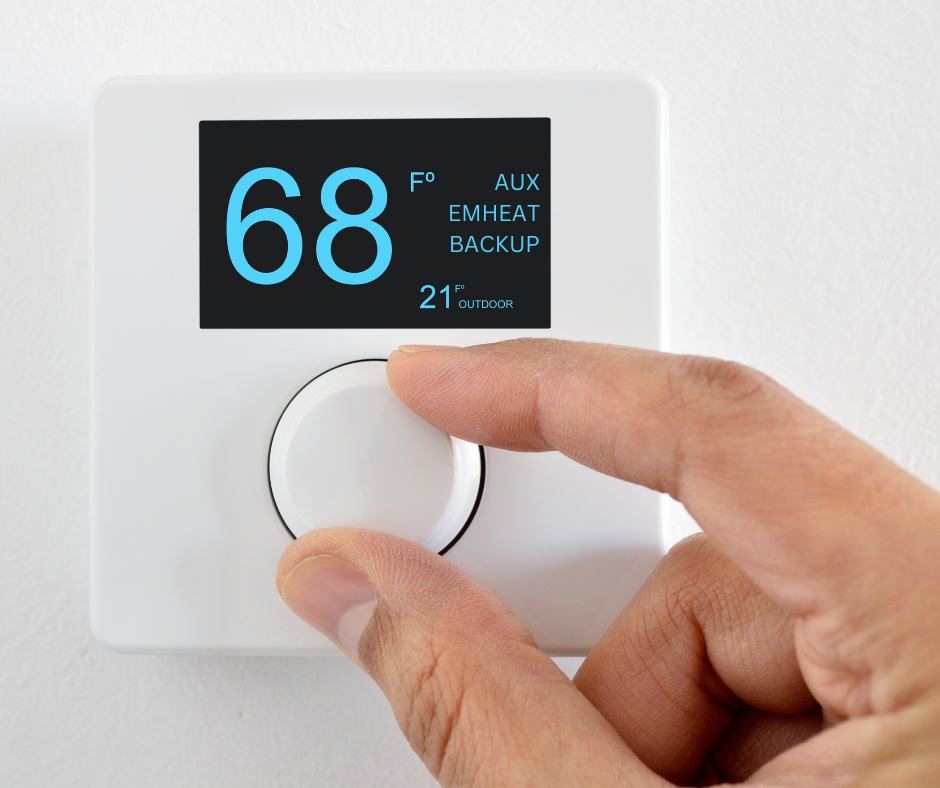 So what’s the real difference between these three? In case you haven’t figured it out yet, emergency heat and auxiliary heat are technically the same thing: with both, your electric furnace is providing heat. However, with auxiliary heat, the electric furnace is assisting your system. In emergency mode, the electric furnace is running alone because the heat pump is locked out.
So what’s the real difference between these three? In case you haven’t figured it out yet, emergency heat and auxiliary heat are technically the same thing: with both, your electric furnace is providing heat. However, with auxiliary heat, the electric furnace is assisting your system. In emergency mode, the electric furnace is running alone because the heat pump is locked out.
And now you might guess that backup electric is just another term for emergency heat, auxiliary heat, or electric furnace!
So, while there’s not a huge difference between the three, it’s important that you know what these phrases mean in order to make informed decisions about your comfort during the coldest days of Indianapolis winters.
At LCS Heating and Cooling, we're here to ensure your HVAC system is in tip-top shape, ready to tackle whatever Mother Nature throws your way. If you have any questions or need assistance, contact us today – we're always happy to help our fellow Hoosiers stay warm and cozy! Stay toasty, Indy!
Electricity Bill Spike? Heat Pumps and Extreme Weather Could Be to Blame!
Why is my electricity bill so high?
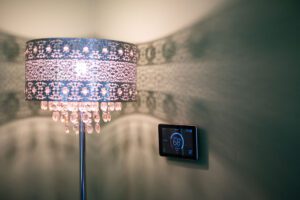 If you’re an Indiana homeowner, you may have had a not-so-nice post-holiday surprise this year in the form of a high electricity bill! We talked to so many people this year who were shocked by the increase in their electricity bill and were at a loss for the cause. While many of us may experience higher electricity bills around the holidays thanks to light displays and more company, there could have been a less obvious culprit for your high electricity bills this year: bitter temperatures. This is especially true if your house has a heat pump.
If you’re an Indiana homeowner, you may have had a not-so-nice post-holiday surprise this year in the form of a high electricity bill! We talked to so many people this year who were shocked by the increase in their electricity bill and were at a loss for the cause. While many of us may experience higher electricity bills around the holidays thanks to light displays and more company, there could have been a less obvious culprit for your high electricity bills this year: bitter temperatures. This is especially true if your house has a heat pump.
Heat pumps are most efficient until temperatures fall below 30 degrees outside. Once the temps dip below that, heat pumps can’t run as efficiently to keep up with the cold, and backup electricity often kicks on. (Now, before you say, “Wait! I bought a super-efficient heat pump!” We have to break the news that the efficiency rating is based on the air conditioning efficiency, not the heating efficiency. Whomp whomp!)
How do I know if I have a heat pump?
If you’re not sure whether you have a heat pump or not, no judgment from us! Here are some quick ways to tell if your home has a heat pump:
- If you don’t pay a gas or propone bill, it’s likely you have a heat pump.
- If your thermostat has an ‘ER’ or ‘EMERGENCY’ button, it’s likely you have a heat pump.
- If your heat kicks on and your outside unit is operating, it’s likely you have a heat pump.
Can I have a heat pump and a gas furnace?
Yes, you can.
A dual fuel HVAC system, or hybrid split system, allows you to switch between the two heating systems, depending on need or cost.
The heat pump functions as the primary heating unit in this case, but when it fails to maintain the necessary heat level, the gas furnace kicks in and supplements the deficit.
If electricity is cheaper, it makes sense to pause the gas or oil furnace and maximize the heat pump. Likewise, it’s smart to run the gas furnace for longer hours when gas prices drop or when temperatures drop below 30 degrees.
What can I do to keep electricity bills low, even when temperatures fall into the single-digits?
Unfortunately, your only option would be to turn off your backup electricity, but the temperatures will keep dropping in your house and your comfort will drop off with those falling degrees. Yes, the best option is to wait for warmer days to give your system (and bill!) a break.
One thing you can do to decrease the amount of time your system is running is to check your filter! A dirty filter increases the amount of time your system has to run and can increase your utility bills.
Heating in the Indianapolis Area
Fortunately for us, the winter seems to have been fairly mild, all in all. But it’s not over yet. ???? If your system isn't keeping you comfortable in your home, contact us today. LCS Heating and Cooling can help you determine a solution that will offer you lasting comfort in your home!
Talk with any industry expert, and they probably know some funny lingo that’s hard for “outsiders” to follow. In the HVAC world, this can be really frustrating—especially when you’re trying to make an informed decision. That’s where LCS Heating & Cooling comes in. We’re all about taking the mystery out of your systems and repairs!
For starters, it’s good to review what HVAC itself even refers to! The acronym is a mash-up of Heating, Ventilation, and Air Conditioning. Together, these systems are what keep your indoor environment comfy year-round. If you need a refresher on the most common HVAC terms and why the parts matter, just skim through this post. (We promise to keep it simple.)
9 HVAC Terms to Know
At LCS, the solutions we design for your home are meant to provide you with “lasting comfort solutions.” Of course, these HVAC solutions will always change from home to home and between families. That’s why it’s important for us to have a variety of offerings that address specific struggles or concerns.
1. Indoor Air Quality (IAQ)
Most people think of air pollution as just an outdoor problem, but it can also be a major issue indoors. When we talk about systems for indoor air quality (or IAQ for short), the focus is on filtration. Getting rid of lingering odors is only the beginning. The latest air cleaners also work to remove bacteria and dust mites, so you get honestly fresh air—that isn’t masked by perfumes or other chemicals.
2. Heat Pump
These nifty units can help keep your home comfortable through every season! Like air conditioners, these systems are located outside. As the name suggests, a heat pump works to move heat. When it’s hot outside, the heat pump will pull warm air out of your home and push it outside. In the colder months, it helps circulate heat throughout your home by drawing in warm air from outside. (Because even in really cold temperatures, there’s still some amount of heat in air that’s above absolute zero, or -273.15 degrees Celsius!)
3. Compressor
The AC (or heat pump) compressor is what circulates your unit’s refrigerant. The refrigerant liquid then absorbs or releases heat to make your home comfortable. Compressors can either work in a single-stage or two-stage cooling setup. Single-stage cooling is the most common, but two-stage comes in handy if you need extra humidity control or a better efficiency rating. Plus, two-stage compressors also aid in noise reduction.
4. Evaporator Coil
The evaporator coil is located indoors, inside the furnace. It holds the cold refrigerant in your air conditioner or heat pump. When hot air blows over the evaporator coil, the refrigerant warms up and turns into gas. This helps removes that heat from your indoor air, making your home cooler. Heat pumps also use evaporator coils in the wintertime. But then, the process goes into reverse. Instead of sending heat outdoors, it draws warm air into your home.
5. Condenser Coil
Air conditioners and heat pumps use condenser coils to either collect heat or release heat. First, the gaseous refrigerant runs from the evaporator coil to the condenser coil, where it returns to its liquid state. Then, the AC or heat pump fans blow over the condenser coil to either heat or cool your home, depending on what you need.
6. Whole-Home Humidifier
During the dry, winter months, whole-home humidifiers can really help boost your home’s cozy factor. By adding a touch of moisture back to your indoor air, humidifiers help create balance. When your air is too dry, it’s easy to get static and dry coughs and cracked skin. These whole-house systems are great because they work with your ductwork to reach every room. And unlike portable units, you don’t have to worry about adding or changing the water—the system knows how to take care of everything for you.
7. Whole-Home Dehumidifier
A dehumidifier works in the opposite way of a humidifier. Instead of adding moisture to your air, these units work to remove humidity indoors. It’s a perfect solution for Indiana weather because sometimes the humidity is high even when it's not hot outside! And when the temperature isn’t that high, the air conditioner doesn’t run long enough to remove humidity—only a dehumidifier can. So, whether it’s spring, summer, or fall, having a whole-home dehumidifier is a great way to keep your home from feeling too sticky or too dry. What you’re left with is just crisp, clean air.
8. Heat Exchanger
Heat exchangers are found in gas furnaces only. Because that’s where combustion takes place, they basically do the bulk of the work inside your gas furnace. The heat exchanger pulls air into the unit and then transfers heat to warm it up. Once the air is nice and toasty, the blower motor distributes the air throughout your house via the ductwork. Without a functional heat exchanger, your furnace won’t be able to raise the temperature to a comfortable setting during the colder months.
9. Whole-Home Zoning
If your upstairs level is way hotter than downstairs, your home might be a good candidate for whole-home zoning. These setups designate specific areas in your home that get heated or cooled independently. That way, your system doesn’t have to struggle to correct the temperature in every room. By setting a limit on where it runs, you only use energy for the places you really need your unit to run.
HVAC Repairs for Central Indiana
It’s easier to know what’s going on when you understand the terms and process and “WHY” behind each HVAC decision. At LCS Heating & Cooling, we do everything we can to educate you about the equipment in your business or home. After all, a big part of having lasting comfort solutions is understanding what they are!
Frustrated with a touchy thermostat? Not sure why your unit is making that weird, rattling noise? Our team is here to help. We’ll walk you through the problem and always do our best to make sure you’re informed every step of the way.
For great year-round service, check out our Residential Energy Savings Plan. These regular check-ins will make sure all the major features of your HVAC equipment are running smoothly. Call us at (317) 238-3961 to get scheduled before the frost sets in. We look forward to serving you!
September 29, 2017
We all want our homes to be comfortable year-round. In the summer, we want to stay cool. During winter, we seek heat. For some homeowners, a heat pump can give them the best of both worlds!
These types of units are often super energy-efficient because they use heat that’s already present. By working with both indoor and outdoor air they can balance—or rather, counterbalance—whatever temperature you want inside. A heat pump can be a great asset. But when it’s not working properly, no one’s happy.
How Heat Pumps Work
If you want to understand heat pumps, it’s good to know that they aren’t too different than an air conditioner or refrigerator. Think about it this way: The coils on the back of the fridge always feel a little hot because the refrigerator works to pull warm air out. That’s why everything in the box stays cool. The same goes for air conditioning units. They’re made to extract heat from the air, and then sort of “exhale” it outside.
They have similar parts and similar purposes to air source heat pumps, but the heat pump has one unique advantage. Both refrigerators and A/C units work to keep places cool. What’s neat about heat pumps is that they work to both cool and heat a home. Here’s the shortlist of what they’re made of:
- Compressor
- Liquid Refrigerant
- Fans/Fins
- 2 Sets of Coils—one for indoors, the other for outside
- Reversing Valve (this is what makes the heat pump different)
Their overall goal of a heat pump is to move heat from one area to another. The compressor works to circulate refrigerant between the two coil sets. And that refrigerant either absorbs or releases heat—depending on the coil set—to get your indoor temperature just right. The fans help move the air around so when you’re ready to switch seasons, your cooling unit can become a heating unit.
Switching the thermostat from heat to cool, or vice versa, will cause the reversing value to switch the direction flow of refrigerant. At that point, the hot air will move in the opposite direction. Rather than “exhaling” the air outside, as it does in the summer, it “exhales” the air inside, producing efficient and economical heat.
Since they do double-duty, heat pump systems can run in any season. They push hot air outdoors in warmer months, and then pull warm air indoors when it’s cold. It’s all with a flip of the switch. Pretty cool, right?
Pros and Cons
Heat pumps have a big appeal for cutting energy costs because they don’t have to exert as much energy creating the heat. They simply use the heat that’s already present and move it to where you need it. Some people don’t realize that there’s still some amount of heat in the air even in cold weather. The little heat pump can still do its thing in winter because it draws in all the heat it can find outdoors and sends it inside.
So as long as outdoor temperatures aren’t super-low, the heat pump can easily be the only heating source for a home. For moderate climate areas, these units can save big bucks on energy costs. It’s when the thermometer drops that it might need backup. As a general rule, this tends to happen when it falls to 30 degrees or below outside.
Because a heat pump isn’t the most effective heating source in below-freezing temps, it might need to be partnered with another supplemental heat source, like a furnace or an air handler, during extreme winter weather. If you’re unsure about your area’s limits, it’s a good idea to consult with a local professional. The right heating and cooling setup can keep your home comfortable and energy-efficient year-round.
Heat Pump Maintenance
Like other HVAC units, a heat pump will last longer with annual maintenance. In addition to annual maintenance, A lot of heat pump users also extend the lifespan of their unit (10-12 years is average) by changing the filter on a regular basis, or about once a month for consistent use. Other than that, just keep the fans and coils clear of debris and you should be set!
If other problems arise, you might need to call on a professional. They can help you diagnose any heat pump repairs by doing all of the following:
- Check indoor coils, ducts, or filters for obstructions
- Seal leaking ducts and ensure adequate airflow
- Confirm proper refrigerant charge (and no leaks)
- Inspect electric terminals, and clean or tighten connections
- Lubricate interior motors, and check belts for tightness and wear
- Test reverse valve and thermostat operations
A heat pump can help keep energy costs low throughout the year—but only as low as it’s properly maintained. A neglected heat pump can end up wasting as much as 25%. So as long as you have a heat pump, you’ll want to keep it in good working order to get those energy savings.
Whether you want to be warmed up or cooled off, a heat pump is a great solution for home comfort. If it’s not doing its job, call in a good heat pump company. A few repairs might be able to put it back on the right track.
September 29, 2016
The last thing on anyone's mind right now is HVAC. It's too warm to need the furnace and too cool to need the air conditioner. We do live in Indiana though so that can change in just 24 hours! We want to provide some tips for things you can do on your own to keep your furnace and air conditioner running at its best. We present the LCS Top Ten of Homeowner DIY HVAC Tips:
10. During cold or hot months, keep the programmable thermostat set within 3 degrees of each setting. A furnace and air conditioner will have to run for a very long time to make up the temperature difference. If you have an electric furnace
and heat pump, the electric furnace will come on as well to reach the set temperature. Since an electric furnace runs at a higher cost, it counters the savings that you might have had with the lower initial temperature.
9. Keep the weed eater and lawn mower away from the control wiring of the air conditioner. The wiring should not be hanging down but if it is, be careful when mowing and weed eating. It's not a high voltage wire but if it gets cut with a weed eater or mower, you can get shocked and it can take out the air conditioner. If the wiring is loose or hanging down, tie it up with electrical tape or have a technician tie it back when they're out doing annual maintenance.
8. If you are experiencing high utility bills, call the gas or electric company first. Ask the utility company if there's been an increase in the therm or electric rate. Ask if your bill compares to the average of others in your neighborhood. You can get great information about what your utility bill should be running. If there isn't a good reason for the higher bill, then it might be time to have a technician out to make sure the system is operating properly.
7. Move furniture away from registers. It's not uncommon to see a couch over a register or a bookcase pushed up against a register. Not only can the heat dry out your furniture but it also prevents the air from properly traveling throughout the rooms.
6. Keep registers open. A very common problem in two story homes is a temperature swing between the upstairs and downstairs. Homeowners try to fix this problem by closing registers upstairs or in some rooms. Keep the registers open. Closing registers can restrict air flow and cause the furnace to run hot. This can ultimately shorten the life of parts inside the furnace such as motors. It can also make the air conditioner freeze up by reducing the volume of air that the system needs to expel throughout the house. This is comparable to running the system with a dirty filter.
5. If you notice a noise, smell or problem, call on it right away. If you notice something unusual, don't ignore it. It's rare that an HVAC issue will go away or resolve itself. Noises and smells often mean that a part is getting weak or going out. A little critter could also have gotten inside. Address these issues before your furnace or air conditioner goes completely out. It's no fun being without heat on a cold day or without a/c when it's hot out!
4. Keep dogs away from the air conditioner. Animal urine will degrade the a/c fins. There's not much that can be done to fix the fins once this happens so it's best to make sure the fur babies stay away.
3. Replace the batteries in the thermostat. If the thermostat goes blank, check to see if there are batteries that need changed. Not all thermostats have batteries, but if it does, it's likely AA or AAA batteries that need changed.
2. Pick up leaves that are around the air conditioner or heat pump. Leaves, cottonwood, branches, etc can gather around the air conditioner. Keep these things cleaned away so the outdoor unit can breathe.
1. CHANGE THE FILTER! This is the number one thing to do to keep your furnace and air conditioner running efficiently! A dirty filter causes restricted air flow and can ultimately cause the system to stop working. If you have a 1" filter, check it once a month. If you have a 4-5" filter, check it every 3 months. It may not need to be changed at that time but it's good to check it to make sure. It's also a good idea to keep extra filters at the house. That way, you always have one on hand when it's time for it to be changed.
A couple of other tips are to caulk or re-caulk around windows and doors. It's also a great idea to check the insulation in your home. If you don't have at least 12-15" of insulation in the attic, you'll want to consider adding more!
Keeping up on these things can not only save you money but can save you from the inconvenience of being without heating or cooling during those hot and cold months. HVAC equipment is definitely an investment. Protect your investment by following our Top Ten tips!
April 23, 2015
Big news in 2015 for the HVAC industry! Have you heard!? There's a new Seer minimum in place! Okay, let's be honest, unless you're in the HVAC industry working with this every day, this is likely not very exciting news. There's a pretty good possibility that you haven't even heard about it! We're here to explain what the new minimum is, what it means, and how it affects you.
A Seer rating is an energy efficiency rating on air conditioners and heat pumps. At the end of 2014, the minimum Seer rating was 13 seer. The new minimums affect some parts of the United States differently than others. For these purposes, the U.S has been divided into a North Region, South Region, and Southwest Region. Since we're located in Indianapolis, we'll focus on the change in Indiana, which is in the North Region.
What is the new minimum? Effective 01/01/2015, the new minimum Seer rating for heat pumps has changed from 13 Seer to 14 seer. For now, air conditioners are staying the same at 13 Seer.
What does this mean? 13 seer heat pumps are no longer being manufactured. When you are ready to replace your current heat pump, you'll likely be quoted at least a 14 Seer. A 14 Seer heat pump will come at a higher initial cost than a 13 seer heat pump but there's also more energy savings with a 14 Seer.
Can I still get a 13 seer heat pump? For a while, there will be 13 seer heat pumps that were manufactured in 2014 or before that are still available. The entire U.S. has moved to a minimum 14 Seer heat pump rating, so once those 13 seers that were manufactured in previous years are gone, they're gone.
Does this affect me now? We saw an advertisement recently in which the message was implying that everyone had to replace their heat pumps now to adhere to the new standards. This is simply not true. The new standards are for new equipment going forward. The new standard does not say you have to upgrade right now! It's not illegal to currently have a 13 seer heat pump installed in your home. It just means that when it's time for new equipment, 14 seer is the minimum.
Does this affect me if I have an air conditioner? No, it does not! The new standard in Indiana is for heat pumps only. Eventually, yes, air conditioners will also move to a minimum 14 seer rating but it's not happening this year in Indiana or any of the North Region. In other states (the South and Southwest Regions), the minimum has already changed for both air conditioners and heat pumps.
We hope this helps to answer your questions about the new minimum seer ratings!
March 24, 2015
We've received several calls this winter about rising utility costs. People have been concerned because they're seeing upwards of $400-$500 electric bills. Yikes! We'd like to share some tips on what you can do to find out if you're experiencing "normal" bills or if there might be a problem causing them to be high.
There are things that can be done to your home to increase efficiency. These things include insulating, caulking, checking for drafty areas, etc. For our purposes now though, we're going to assume that your house is in the same condition this year as it's been in prior years.
So, is your electric bill high or might there be an HVAC problem?
First things first, call your utility company. Ask what the neighborhood average is and compare to your bill. Ask if the kilowatt rate has changed. Ask if the therm rates have changed. This will give you a good idea on whether your bill is comparable to that of your neighbors. It'll also make you aware of rate increases that have happened which could contribute to higher bills from previous years.
If your electric bill is higher than the neighborhood average, here are some other things to consider:
If you are all electric, you should have a heat pump and electric furnace (also called an electric air handler). This is the most efficient type of HVAC system to have in an all electric house. Many people set their programmable thermostat to be one temperature during the day and another at night. If you are all electric, do not set the temperature difference to be more than 3-4 degrees apart. Larger temperature differences will cause the back-up electric to come on to supplement the heat pump. It's costly to run the auxiliary heat. The savings that you are getting from the lower temperature is being offset (or costing more) by the back-up electric running to catch up.
Do you change your filter regularly? How long has it been since your furnace has been cleaned and tuned? Dirty filters restrict air flow and cause the system to run longer to heat the house. This causes a higher electric bill. Dirty filters over a period of time or a lack of filters at all can result in dirty coils. A dirty coil can also restrict air flow. If the heat pump isn't working, the electric furnace is running by itself to heat the house. It's expensive to run an electric furnace by itself. The average amp draw on a heat pump is 6-15 amps. The average amp draw on an electric furnace with a 10kw auxiliary heat kit is 41-44 amps. That's a big difference which is why you want your heat pump running efficiently.
Do you keep registers closed throughout the house? If there's a temperature difference between the upstairs and downstairs, for example, people tend to close the registers in a room or area of the house. Do not close registers. This can also restrict air flow, causing the system to overheat and short cycle. This means the furnace will be shutting down and turning back on more than it should be, which uses more electricity and costs you more.
One more thing to keep in mind. Some people have a high efficient heat pump system and then are surprised by their electric bills when it's really cold outside. They get a high bill and think...but I just got a high efficient system. Heat pumps are most efficient in the heating season when it's between 35-60 degrees outside. In Indiana, it's not unusual to have 0-20 degree days (or weeks). When it's that cold outside, heat pumps need the auxiliary heat from the electric furnace to keep up. The heat pump can't keep up by itself meaning you're losing that efficiency rating because the electric furnace is doing most of the work. It's costly to run auxiliary heat compared to a heat pump or gas furnace. If you buy a high seer heat pump, it's important to understand that the seer rating is mainly for the summer months.
We hope this has been helpful! If you continue to have high electric bills, give us a call. Maybe there's a problem with the heat pump causing the auxiliary heat to run more than it should. Maybe there's a bank of heat not working in the electric furnace. It's worth checking out, especially if those high electric bills are causing you a lot of stress!
March 12, 2015
We get lots of questions regarding HVAC maintenance. This is a good thing! It means people care about their HVAC investment. Since we're entering air conditioner season, let's focus on questions relating to air conditioner maintenance:
- What is air conditioner maintenance? Preventative maintenance is completed on the a/c to ensure that it is running properly and as efficiently as possible. The air conditioner is cleaned and there are many components that are checked. If a reading is off or out of range, the homeowner will be made aware. Keeping the air conditioner clean also ensures proper air flow.
- Can I turn my air conditioner on before maintenance has been completed? Yes! The air conditioner can certainly run before maintenance is done. Keep in mind that maintenance keeps it running as efficiently as possible.
- What months do you schedule maintenance? We generally start scheduling maintenance mid-April, depending on the weather, and continue to schedule throughout the summer. It's more important that maintenance is done each year rather than it being done a specific week or month.
- Can the service be completed if it's raining? We will reschedule your maintenance appointment if it's raining or below 60-65 degrees outside. Although the techs do have raincoats, we don't want some of the tools and gauges out in the rain. We also don't want your a/c exposed to the moisture. The new R-410 refrigerant attracts moisture 10 times more than the old R-22 refrigerant. We don't like to take chances, so we'll always reschedule if it's raining. In addition to being dry outside, it also needs to be at least 60-65 degrees outside. If it's colder than that, the temperature drop and readings could be inaccurate. Accuracy is key, so we will reschedule if it's too chilly outside.
- How will I know what the technician does during the service? The technician will complete an invoice detailing everything that was completed during the maintenance service. He will also let you know how everything looked and answer any questions you have about your system.
- How much does an annual maintenance plan cost? Our plan is $150 per year. That includes the maintenance service on the a/c in the spring or summer and the maintenance service on the furnace in the fall/winter. Other benefits included with the plan are: No service call if a return visit is needed within 30 days, $10 off service call, 15% off repairs, 15% off indoor air quality (humidifiers, filters, thermostats, UV lights, etc) and no overtime rates if service is needed in an evening, weekend or holiday.
- Does maintenance guarantee that my air conditioner will not break down? Air conditioners are machines and can break down at any time. That being said, there are issues that can be found during maintenance and either repaired at that time or at least brought to the homeowner's attention. For example, the technician may see that a motor reading is in range, but on the high end. While it doesn't necessarily need replaced at that time, the homeowner can be made aware that the motor is on it's way out. It could last another week or it could last another 6 months. In any case, the homeowner is now aware.
- Will you change my filter while you're here doing maintenance? Absolutely! If you already have filters, we will gladly change it for you. If you don't have filters, we can provide you with the price to bring one with us. We also have an online filter program in which we can provide you with a code to order your filters online and have them delivered to your door. Shipping is free and you'll always have your filters on hand.
- What if I have two HVAC systems at my house? We can put each system on the annual maintenance plan. We'll schedule a longer period of time to be at your house to complete maintenance on both air conditioners (and same in the fall/winter for the furnaces). The second system would be $10 off ($150/$140 for two plans).
- Do I need to be home when you do the air conditioner maintenance? Preferably, yes. We will need access to the thermostat and furnace area so will need inside the house. If you have a lockbox or garage code, we can enter that way but always prefer having someone home so the technician can answer any questions while he's there.
Hopefully, we answered some of your questions about air conditioner maintenance! If not, feel free to contact us as we're happy to discuss.
May 1, 2014
We've had one of the coldest winters on record here in Indianapolis so it seems everyone has spring fever! With the arrival of spring comes a whole checklist of home maintenance items just waiting to be done. Here's a list of items that you can do around your home
to tidy up and get ready for summer:
- Schedule air conditioner maintenance (you knew this would be #1 on our list, right?)
- Change the filter
- Install new batteries in thermostat
- Install new batteries in smoke and carbon monoxide detectors
- Test and dust all detectors
- Check fire extinguishers
- Inspect bathroom, kitchen, door and window caulk; re-caulk as needed
- Clean and seal deck if needed
- Inspect exterior paint and touch up as needed
- Inspect siding/masonry for damage
- Repair/replace damaged window screens
- Inspect roof for damage
- Inspect outdoor play equipment
- Inspect attic for leaks
- Inspect attic insulation
- Clean gutters
- Prune spring and summer- flowering shrubs after they bloom
- Schedule yearly septic tank inspection
- Schedule irrigation inspection
- Inspect foundation for drainage problems
- Inspect crawl space/basement for moisture issues
Preventive maintenance goes a long way. Monitoring items such as these can prevent big problems in the future! Enjoy spring!
April 8, 2014
Investing in home upgrades can be fun....or not so fun! Many homeowners are excited to add a sunroom, remodel a bathroom, finish a basement, pick out new flooring or granite tops. How about picking out a new furnace though? HVAC is something we need but it's not always fun to invest in because it can't be seen. HVAC is all about comfort. As homeowners consider their HVAC upgrades, we are often asked out rebates, incentives, and tax credits. Being a new year, the money available to homeowners is different than what it was last year. To keep things simple, we've listed below what's available now:
Lennox Equipment Rebates- The Lennox spring promotion is on from March 24 - June 13, 2014. Rebates ranging in price from $75 - $1,300 are available on high efficient equipment. Rebates are based on the installation of a single unit (air conditioner, heat pump or furnace) versus the installation of a full system (furnace, air conditioner or heat pump and thermostat). Rebates also vary based on the efficiency of the system. Also available are rebates ranging from $50 - $300 for PureAir filtration, zoning and solar panels.
Utility Rebates- A few of the utility companies are carrying their rebate programs into 2014.
Vectren- $150 for a 92-94% efficient gas furnace. $250 for a 95%+ efficient gas furnace. $300 for a 90%+ efficient natural gas boiler. $20 for a programmable thermostat.
Citizens Gas- $150 rebate for a 92-94% efficient gas furnace. $250 for a 95%+ efficient gas furnace. $300 for a 90%+ efficient natural gas boiler. $20 for a programmable thermostat.
Duke Energy- $200 for a 14+ seer heat pump with ECM fan on indoor unit. $200 for a 14+ seer air conditioner with ECM fan on indoor unit. $200 for 10.5+ EER geothermal heat pump.
Vectren and Citizens Gas also offer rebates for duct sealing, attic insulation and wall insulation. See their websites for insulation specifications. IPL's residential rebate program ended in 2013.
Federal Tax Credit- The federal tax credit available for 2014 is a 30% tax credit on the installation of solar panels, wind energy and geothermal heat pumps. This tax credit will remain in effect until December 31, 2016.
If you are considering an upgrade to high efficient equipment, now is a great time to do so. Why not save some $$$ that you'd otherwise be spending? There are always options when it comes to HVAC systems, energy efficiency and comfort. Contact us anytime for a free quote!
March 19, 2014
